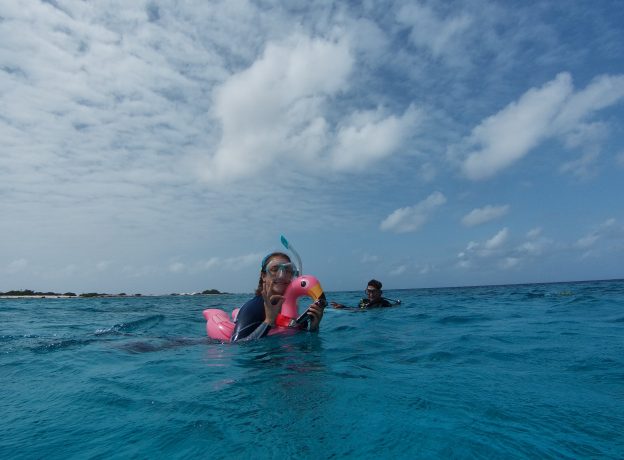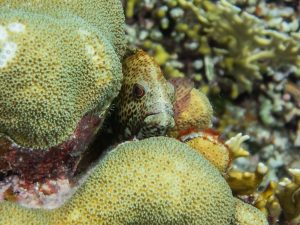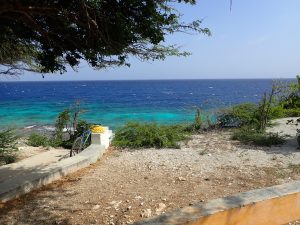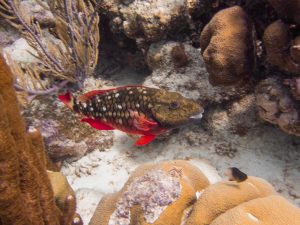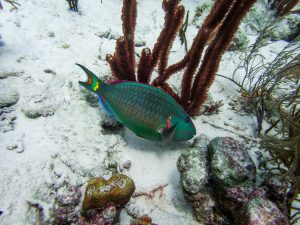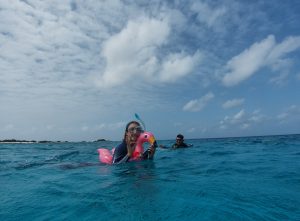Along with tracking individual stoplight parrotfish, Sparisoma viride, our team has been busy conducting behavioral observations and getting GPS tracks of four other species of parrotfish for a total of 175 fish follows! It has been interesting to see how these species’ behaviors differ. While striped parrotfish (Scarus iseri) pay little attention to other males and do not defend their space on the reef regularly, other species, like the redband parrotfish (Sparisoma aurofrenatum), interact with conspecific males by flaring their dorsal fins as if to say, “this is my area, stay out!”
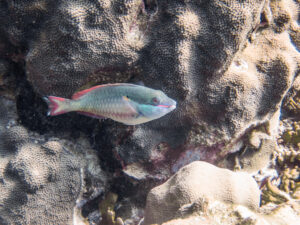
The redband parrotfish, Sparisoma aurofrenatum, will flash its fins at intruders instead of chasing them away like other parrotfishes.
One of Josh’s goals for the summer is to get a better idea about how terminal phase stoplight parrotfish interact with other conspecific males to defend their territory on the reef. During multiple dives, Josh and I followed male stoplight parrotfish and categorize the type and the duration of interactions with both terminal and initial phase fish. While males regularly chase smaller “floater” males (i.e., fish that do not possess a territory) out of their territory, it appears that males of similar size that share territory boundaries interact less often and less aggressively. . This “dear enemy” effect has been observed in several other species, but never documented in parrotfishes! Males will often interact with females in their territories. These interactions are usually brief and appear to be over feeding spots. However, on occasion we would see males chase females completely out of their territories, suggesting that maybe these females were not part of their harem.
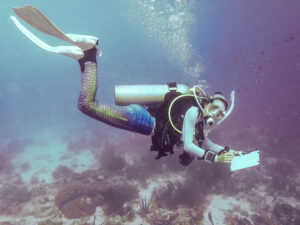
Collecting “dear enemy” data on parrotfishes
Photo Credit: Joshua Manning
In his previous work, Josh found that males of some species partition reef space into non-overlapping territories but share space with other parrotfish species. As part of Josh’s dissertation work, we wanted to observe how fishes interact within shared spaces. During days we were not diving, our team donned snorkel gear and headed to Invisibles and Aquarius to simultaneously track parrotfishes. During these tracks, I would follow a male stoplight parrotfish around the reef site while Josh followed a male queen parrotfish. For most of the follows, our fish generally did not interact much, often swimming by without paying any mind to the other. Occasionally, however, the two fishes would swim toward the same patch of the reef to graze. It was a moment of excitement for us on the surface – sometimes we would be so focused on following the fish and seeing which species got to graze at the coveted lunch spot that we would forget about the other person on the surface!
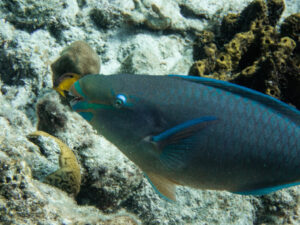
A terminal phase queen parrotfish, Scarus vetula, after briefly grazing on the benthic substrate continues swimming to find its next snack!
Josh hopes that these data will help us to better understand the drivers behind territory maintenance and space use in parrotfishes, which may have implications for the makeup of the underlying benthic community. This in turn could provide important insights into coral reef management to restore and maintain a healthy ecosystem.
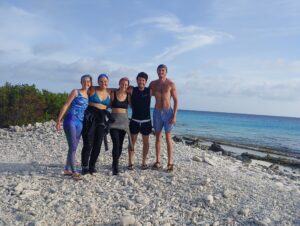
The team is all smiles after wrapping up a great field season!
This summer has been packed full of field work both above and below the surface and I was able to learn a lot about the role of parrotfishes on coral reef ecosystems! I am so grateful that I was able to experience Bonaire for the first time with this amazing group of researchers. Thank you to Our World Underwater Scholarship Society and the American Academy of Underwater Sciences for providing me with the opportunity to be the 2021 Mitchell Internship, and to Josh Manning and the members of the McCoy lab at Florida State University for being such great hosts!


